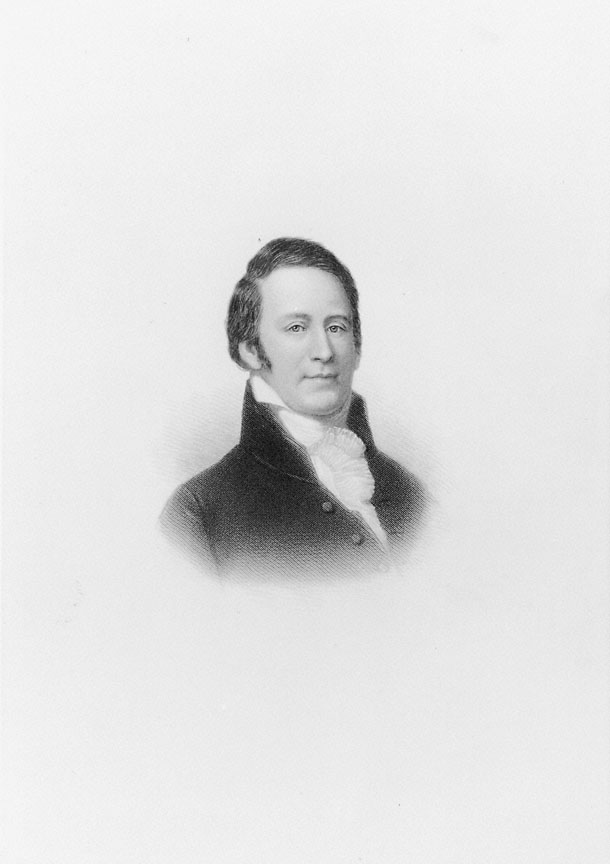Built in 1805 near present-day Astoria, Fort Clatsop was the winter quarters for the Corps of Volunteers for Northwest Discovery, more commonly known as the Corps of Discovery or the Lewis and Clark Expedition. Sent by President Thomas Jefferson, the Expedition had as its assignment the exploration of the Missouri and Columbia rivers in search of an inland waterway to the Pacific Ocean. They were also charged with gathering as much scientific data as possible on the natural resources and resident populations encountered along their route. Captains Meriwether Lewis and William Clark led the group of thirty-one people, which included Toussaint Charbonneau, a French Canadian fur trader; his Shoshone wife, Sacagawea; their infant son, Jean Baptiste; and Clark's slave, York.
In November 1805, eighteen months after leaving Camp Wood, Illinois, at the mouth of the Missouri River, the Corps reached Cape Disappointment in present-day Washington State and saw the Pacific Ocean for the first time. Inclement weather quickly ended their joy in seeing the ocean. With winter approaching, the entire party, including Sacagawea and York, voted to scout locations for an encampment on the south side of the Columbia, where they could find shelter and game. They chose a spot two miles up the present-day Lewis and Clark River, a site that offered access to a freshwater spring and shelter from the harsh weather. It was also close to the river and the coast, where they could establish a salt works and keep watch for trade ships.
Construction of the fort began on December 9, and the Corps moved in on Christmas Day. The fort, located in the homeland of the Clatsop people, was the first American military structure built west of the Rocky Mountains.
Clark described Fort Clatsop as fifty feet square with parallel cabins. One cabin contained three rooms for enlisted men's quarters; the other contained the captains' room, a family room for the Charbonneaus, an orderly room, and a storeroom. The space between the facing cabins formed a parade ground, with gates installed at each end.
Winter at Fort Clatsop meant constant hunting and gathering. Hides were made into moccasins and coverings to replace the Expedition's ruined and worn-out supply. A party sent to the ocean rendered salt from seawater, and members of the Corps visited and traded with local Clatsop and Chinook people. During their three months at Fort Clatsop, the captains recorded some of their most important scientific, cartographic, and ethnographic information in their journals.
In the 106 days spent at Fort Clatsop, there were only twelve without rain and only six with sunshine. Journal entries complain of fleas, illness, and incessant rain. Their general discomfort and the movement of elk herds persuaded the Expedition to return upriver on March 23, 1806, rather than waiting until April 1, the departure date originally set by the captains. They bid farewell, leaving "our houses and furniture" to Clatsop Chief Coboway.
National Monument
Oral tradition by the descendants of Coboway and area homesteaders preserved the site's location, if not the structure. Weather degraded much of the buildings, and subsequent homesteaders removed or set fire to what was left. In 1901, the Oregon Historical Society researched and purchased a three-acre tract identified by the combination of contemporary cartography from the expedition, maps and survey work detailing the area, and personal testimonies. The precise location of the fort buildings and parade grounds has been a matter of continuing study.
To commemorate the sesquicentennial of the Lewis and Clark Expedition in 1955, the Astoria Junior Chamber of Commerce built a replica of the fort, which in 1958 became the Fort Clatsop National Memorial. In 2004, Fort Clatsop became part of the expanded Lewis and Clark National Historical Park. A fire in October of 2005, destroyed the replica of the fort and it was rebuilt in 2006.
-
Ft. Clatsop, OrHi 646.
Sketch of Fort Clatsop. Oreg. Hist. Soc. Research Libr., OrHi 646
-
![Fort Clatsop replica under construction.]()
Ft. Clatsop, replica of, under construction, 5326.796.
Fort Clatsop replica under construction. Clatsop County Hist. Soc., 5326.796
-
![Driving the iron post to locate the monument at old Fort Clatsop, June 9, 1900.]()
Ft. Clatsop, dedication of, 1900, 11190.796.
Driving the iron post to locate the monument at old Fort Clatsop, June 9, 1900. Clatsop County Hist. Soc., 11190.796, 96.32.5
-
![W. Hampton Smith house on the Fort Clatsop site, June 1900.]()
Ft. Clatsop, Smith House on site of, 11186.796.
W. Hampton Smith house on the Fort Clatsop site, June 1900. Clatsop County Hist. Soc., 11186.796, 96.32.1
-
Ft Clatsop, OrHi 1695.
Fort Clatsop site. Oreg. Hist. Soc. Research Libr., OrHi 1695
Related Entries
-
![Jean Baptiste Charbonneau (1805-1866)]()
Jean Baptiste Charbonneau (1805-1866)
Jean Baptiste Charbonneau is remembered primarily as the son of Sacagaw…
-
![Lewis and Clark Expedition]()
Lewis and Clark Expedition
The Expedition No exploration of the Oregon Country has greater histor…
-
![Meriwether Lewis (1774-1809)]()
Meriwether Lewis (1774-1809)
Reflecting on Meriwether Lewis after his death, Thomas Jefferson bemoan…
-
![Sacagawea]()
Sacagawea
Sacagawea was a member of the Agaideka (Lemhi) Shoshone, who lived in t…
-
![William Clark (1770-1838)]()
William Clark (1770-1838)
William Clark is indelibly connected to Oregon in many ways, some obvio…
-
![York (ca. 1770–?)]()
York (ca. 1770–?)
York was William Clark's slave and an integral member of the Lewis and …
Related Historical Records
Map This on the Oregon History WayFinder
The Oregon History Wayfinder is an interactive map that identifies significant places, people, and events in Oregon history.
Further Reading
Cannon, Kelly. Fort Clatsop National Memorial Administrative History. Washington, D.C.: National Park Service, U.S. Government Printing Office, 1994.
Dattilio, Daniel. Fort Clatsop: The Story Behind the Scenery. Las Vegas: KC Publications, 1986.
Josephy, Alvin M. Jr. Lewis and Clark through Indian Eyes: Nine Indian Writers on the Legacy of the Expedition. New York: Vintage Books USA, 2007.
Mouton, Gary E., ed. The Definitive Journals of Lewis and Clark. Vols. 5 and 6. Lincoln: University of Nebraska Press, 1988, 1990.










